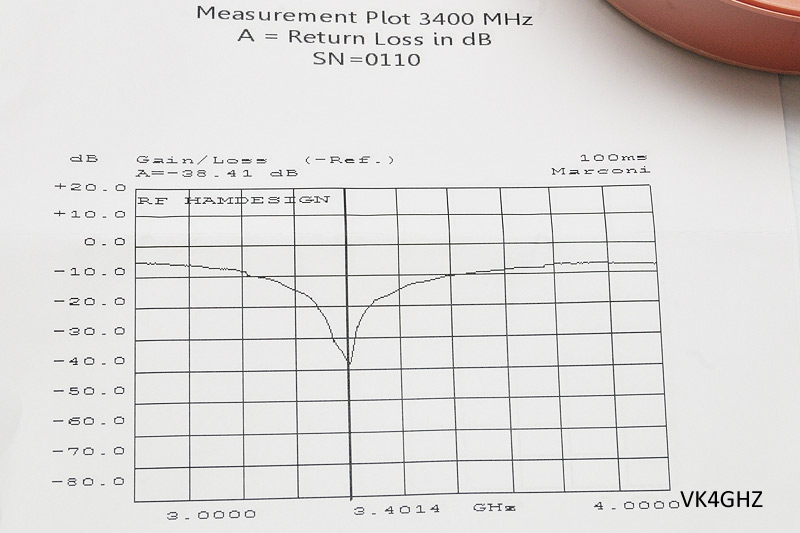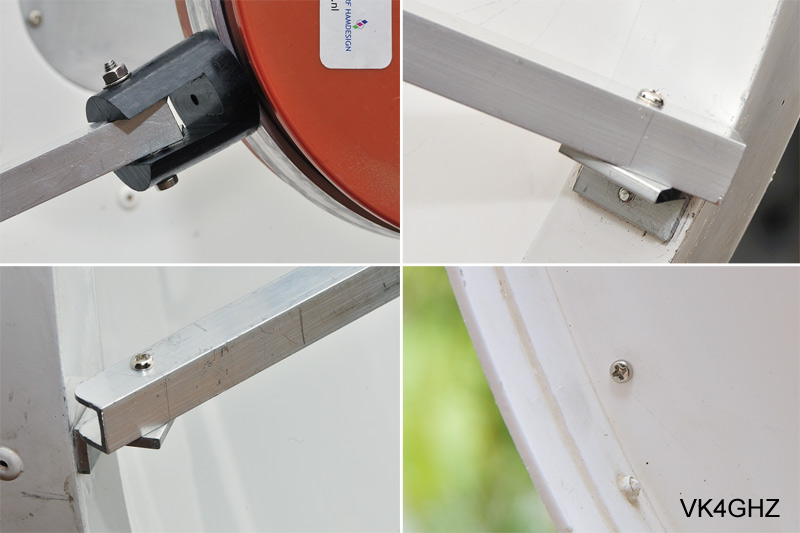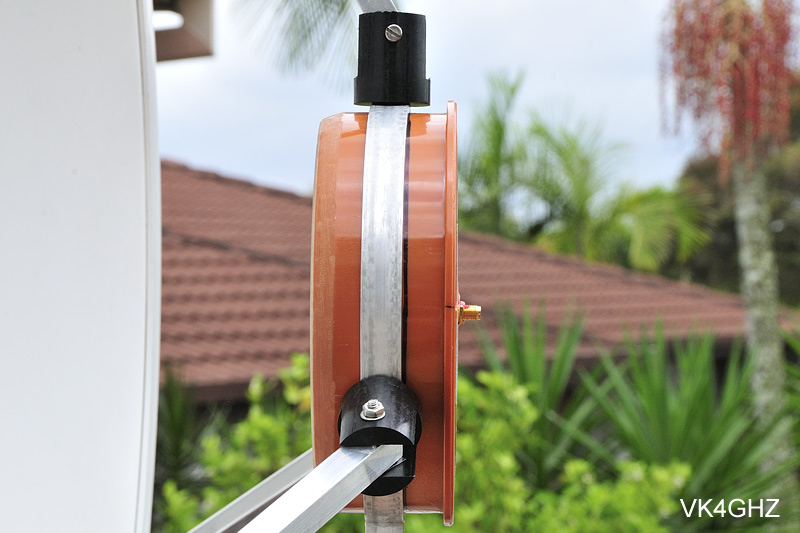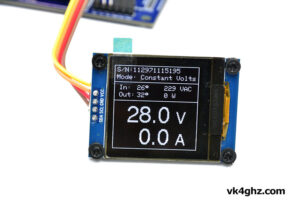
Here is a quick review at the RF Ham Design tri-band ringfeed for 9, 6 and 3cm, model # FPF R963, and accessory mounting bracket, CLX-1.
Although RF Ham Design produce quite a number of [url=http://www.rfhamdesign.com/products/parabolicdishkit/dishfeeds/index.html]parabolic dish ringfeeds[/url], and already having a gridpack for 2.4GHz, the tri-band feed for 3400MHz, 5760MHz and 10368MHz was of interest.
The total shipped cost, (which included the optional CLX-1 mounting bracket), via registered mail to my door was 201.50 Euros.
With the relatively strong Aussie dollar at the moment, it’s a great time to be buying from the USA and EU.
Why is a muti-band dish feed of interest for Field Day use?
KISS!
Four gridpacks and/or dishes for 2.4, 3.4, 5.7 and 10GHz would simply not fit into the vehicle, not with all the other radio and camping stuff anyway!
And, who wants to align four different antennas each time to work the same station?

Above: 13 days to get here from the Netherlands, not bad!

Above: Well packed – double-boxed!


Above: Separate SMA connectors for each band


Above: For horizontal or vertical polarisation, align accordingly

Above: A network analyzer plot is provided for each band

Above: View from the “business end”
There is no mention in the documentation of where the focus point is.
I sent an email to Frank asking where the focus point was, in relation to the front face.
Hi Adam,
The center of all bands is in the middle of the feed, for calculating focus point, add 3.5cm
to get the reight focus distance compared to front of the feed.Kind Regards,
Frank Postmus
Chief Executive Officer
Room H2/BRF HAMDESIGN
The Netherlands
So, 3.5cm in from the front face, towards the rear face with the SMA connectors on it.

Above: Front end is tapered. The front face (not sure of material, but looks like fibregalss) appears to be glued on, for a weatherproof seal

Above: RF Ham Design CLX-1 ringfeed mounting bracket

Above: Stainless hardware

Above: This visualizes how the tapped POM (polyoxymethylene) pieces attach to the aluminium strap

Above: For a prime-feed dish, this is how the three feed arms would attach to the CLX-1 bracket
Mounting the bastard!

Above: Once the focus point was worked out, it was positioned in position with all sorts of household stuff.
The legs were trimmed to the required size, and mounted to the rim of the dish with M3 hardware.



Above: Mounted to a 60cm Mitec prime focus dish
Mounting it to an offset dish is a great deal harder!
I will have to fabricate a custom mounting arrangement to fasten the CLX-1 bracket to an LNB mounting arm.
Compared to optimized mono-band feed and dish setups, a compromise is expected, but the convenience and practicalities for Field Day use far outweighs any negatives.
It might be a different story with EME, trying to squeeze the last 0.1dB out, but for FD use, let’s keep it real, and just make contacts.
In this case, you align the dish once at 3.4GHz, and the antenna is already aligned for the contacts on the higher bands.
(Which would become increasingly difficult with the narrower beam widths involved at the higher bands)
Ordering with RF Ham Design is easy, one email to confirm total price (essentially to confirm the shipping costs), and they accept credit card and PayPal.
There is a small % surcharge for credit card and PayPal, but don’t forget to take off the 17% VAT (applicable to internal Netherlands customers only) from the prices on the price list.
Frank responds to email very quickly, even allowing for the time difference between Australia.
It will be fun to experiment with and use this. 😀
Update: 2015
I do not recommend these, unless you have extra isolation measures in place that ground each port when unused.
It is very easy for RF from one port to couple into another, and damage sensitive LNAs.









